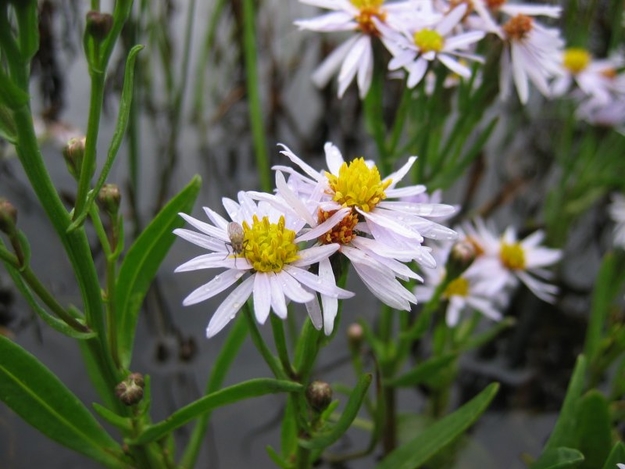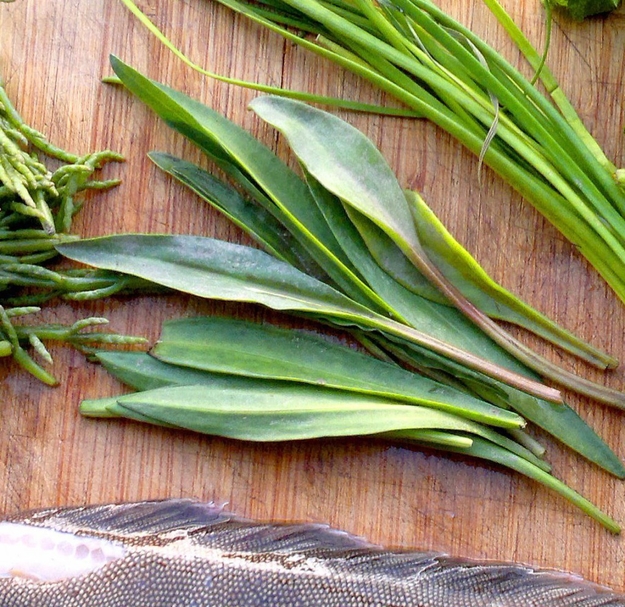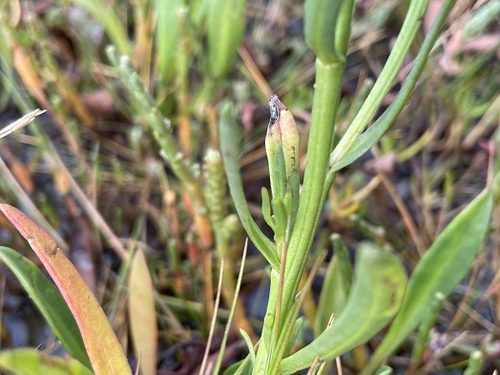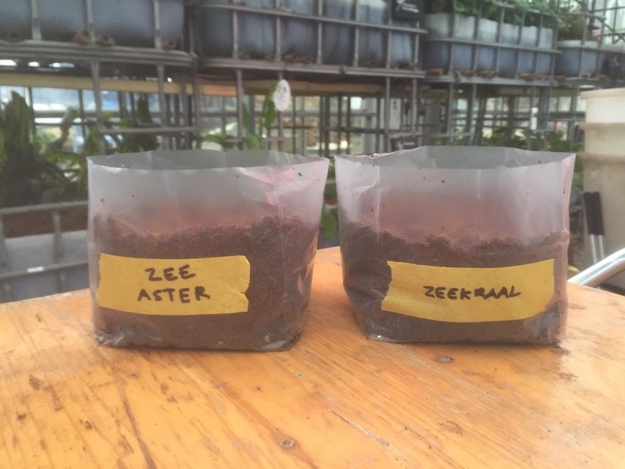General information
In Dutch the leaves of this plant are known as Lamsoor (lamb’s ear), and are consumed as a vegetable. This name can be a bit confusing, because it is used for two different plants. The ‘real’ Lamsoor is a plant called Sea Lavender, or Limonium vulgare. However, since the leaves of Sea Aster are sold as Lamsoor, way more people associate Lamsoor with Sea Aster than with Sea Lavender. Locally, they can be found along the banks of het Noordzeekanaal and het IJ. It can also be found in natural area 'het Houtrak', which is close to Amsterd. In the late summermonths these fields turn into a purple oasis.
Leaves and flowers
From July until October, Sea Aster grows blue and lilac flowers that attract bees and butterflies. The leaves of Sea Aster can be eaten and are a bit similar to Spinach, but saltier in taste. The leaves can be harvested from April until July, before the flowers come up.
Salt tolerance mechanism
Sea aster has a special way to deal with a salty environment. The plant stores the whole surplus of salt in one leaf. This leaf is easy to recognize because it is a bit shriveled, has a different color (yellow-reddish) and is a bit thicker. At same point this plant looses this leaf and appoints a new one to be the salt reservoir. The picture below shows an example of such a salt reservoir leaf in the bottom left corner.
Medicinal Properties
Sea Aster contains high amounts of Vitamin A, C and D. Vitamin A is crucial for helping the immune system work properly, and helping vision in dim light. Meanwhile, Vitamin C is useful for protecting cells and keeping them healthy, as well as maintaining healthy skin. Vitamin D helps to keep calcium and phosphate in the body, which is needed for maintaining healthy bones and muscles.
How to grow
To grow Sea Aster from seed, sow the seeds in March-April on some loose soil. Don’t cover the seeds with soil. They need light to germinate. Lightly pressing the seeds in the soil is enough. The lower temperatures at night promote germination. The seeds need sweet water to germinate, but once they are in the seedling stage they can tolerate brackish or salt water. With exposion to higher concentrations of salt, the growth of the plant will be reduced, but the taste of the leaves will be more interesting. Sea aster is a winter hardy, bi-annual plant that grows well in wet, nutrient-rich soil. It requires full sun.
We are using the seed package of IVN nature education. They also did research about growing saline vegetables and herbs. We already started growing Sea Aster and Saltwort. It is a bit early, but since we are growing them in the greenhouse this should be possible. We left the Sea Aster inside for a week, and now put it in our cold greenhouse. It may take up to 6 weeks until the seeds germinate. Buckle up for some updates!
Sources
'Zilt' by Anette van Ruitenburg, Ellen van Straten & Sabien Bosman



